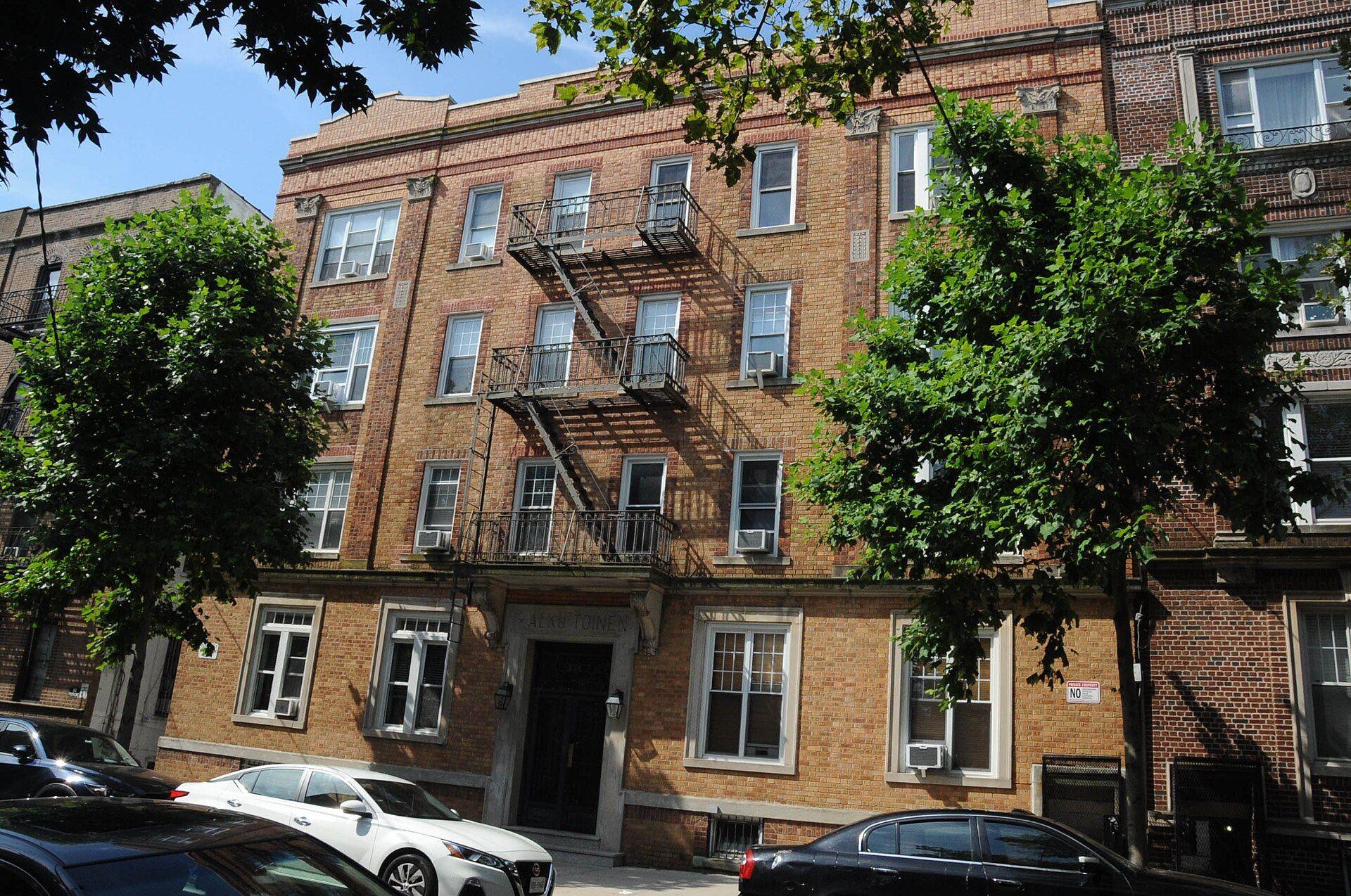BUILDING POWER IN HOUSING WORKSHOP
Participant Guide Objective & Instructions
OBJECTIVE :
This participant guide aims to educate community members on the concept of power imbalance in housing, and cooperatives as a possible solution.
WORKSHOP TOOLS :
Facilitator Guide
Participant Guide






Building Power in Housing Workshop

SCHEDULE

1 WELCOME AND INTRODUCTIONS
Name. 2. Pronouns (optional).
3. Where do you live and how long have you lived there?
4. What is your favorite thing about your neighborhood?

2 WHAT IS POWER?
Power is the ability to influence, control, or shape outcomes, decisions, or actions.
Who has the power in your housing situation?

2 WHAT KIND OF POWER?
LANDLORD power

A landlord’s power comes from owning the housing people need to live.
TENANT power

A tenant’s power comes from their strength in numbers, and the landlord’s need to collect their rent.
How do landlords exercise power, and in what circumstances?
How can tenants exercise power, and in what circumstances?
2 EXERCISING POWER
Think of a time that you, alone or together with your neighbors, solved a problem in your housing. How did you do it?
What resources did you use? For problems that go unsolved, what do you think needs to change?

15 MINUTE BREAK!.

Time for a 1 5 min break!

3 WHAT IS A HOUSING COOPERATIVE?

“A housing cooperative is owned and managed collectively by its residents, who work together to make decisions about costs, maintenance, and policies.”
3 COOPERATIVE STRUCTURE
A cooperative is structured to be run by and for the residents
- Most cooperatives in NYC are registered as non-profits, and are administered by a board
- All residents are responsible for management and upkeep of the building, sharing resources, and making decisions democratically

3 BENEFITS AND RESPONSIBILITIES
BENEFITS:
AFFORDABILITY: Stable, permanently affordable housing compared to rental units
RESPONSIBILITIES:

COMMUNITY: The sense of belonging to a community CONTROL: Decisions are made collectively and democratically
COMMITMENT: Investing time to actively engage
SELF-MANAGEMENT: Helping make decisions and following collective direction
KNOWLEDGE: Getting to know the policy/structure necessary to run a cooperative
3 HOUSING COOPERATIVES DISCUSSION
Now that you’ve learned about cooperatives…
How would you feel about living in cooperative housing?
How would it affect the power you and your neighbors hold over your housing?
How would you feel about the responsibility of managing your building along with your neighbors?

4 TYPES OF COOPERATIVES.
WAVES OF CO-OP DEVELOPMENT:
WORKER CO-OPS (1910s-30s): Developed by labor unions and other independent institutions for their membership

MITCHELL-LAMA: (1950s-60s): Large-scale cooperatives developed through state incentives
HOUSING
DEVELOPMENT FUND
CORPORATIONS
(HDFCs) (1970s-): Post financial crisis, developed through transition of dilapidated public property to cooperative housing
All three types of cooperatives have combated funding challenges and privatization over the decades
4 SUNSET PARK’S COOPERATIVE HISTORY.
Sunset Park is the birthplace of the housing cooperative movement in the United States
- First affordable housing cooperatives built on 43rd St in 1916 by Finnish immigrants
- Today, there are dozens of cooperatives in Sunset Park built in different periods of the neighborhood’s history


4 COOPERATIVES
IN SUNSET PARK


5 WHAT COMES NEXT?
How can you take this information back to you neighborhood?
Think of two actions you can take to help you and your neighbors build towards cooperative solutions.

BUILDING POWER IN HOUSING WORKSHOP


That’s a wrap, Thank you!
Facilitator Guide: BUILDING POWER IN HOUSING WORKSHOP

Our long-term toolkit is designed to help organizers fight for cooperative housing in the long haul. This kit includes two workshops in English and Spanish, including a slide deck and printable facilitator and participant packets.
Taken together, these are resources to build out events which can educate the community on cooperative forms of organization, and ultimately bring community members into the campaign for a Community Land Trust in Sunset Park The important part is using this workshop as part of a broader plan to build an organizing campaign.
WORKSHOP LOGISTICS:
Run time: 2 hours
Space: Indoor or outdoor; enough sitting space for all attendees;
Materials:
➢ Printed Facilitator and Participant guides
➢ Markers; Pens; 3x large pieces of paper or white board
➢ [Optional] Projector and computer for slides
➢ [Optional] Food/snacks
Roles:
➢ Facilitator(s) (1-2 people) - Take charge of the group and curriculum, guiding workshop participants through the curriculum
➢ Timekeeper/notetaker (1 person) - take notes; keep workshop running on schedule
➢ Optional volunteers - run breakout groups; support facilitator(s) and timekeeper
Facilitation Goals
➢ Help participants reflect on their collective power as tenants
➢ Encourage discussions that validate participants’ experiences
➢ Guide participants toward identifying actionable steps for tenant organizing
Facilitation Tips
Encourage Active Participation
➢ Use open-ended questions to spark dialogue.
➢ Create small-group discussions or pair-share activities to ensure everyone has a chance to speak, especially quieter participants
Center Participants’ Experiences
➢ Validate stories by listening actively and acknowledging shared struggles.
➢ Avoid imposing solutions; instead, guide participants to identify their own sources of power and ideas for action
Supplement with Visual Tools, But Center Live Participation
➢ Engage participants in available visual aids to make abstract concepts more concrete
➢ Avoid reading from slides Use them as a tool for reference / visuals, but always center the conversation between participants and facilitators.
Balance Reflection and Action
➢ Dedicate time to reflect on challenges and emotions but also guide participants toward actionable steps
➢ Close each section with a question or task that moves toward empowerment
WORKSHOP OUTLINE AND GUIDE:
Learning Objectives
1. Introduce problem of power imbalance in housing, and develop an understanding of collective action as the solution
2 Build understanding of (and desire for) cooperative housing as a model to build power for
1. Welcome and Introductions (20 minutes)
Goal: Build group rapport and introduce the workshop’s purpose
➢ Greet participants and welcome them to the space
➢ Introduce the workshop’s goals
“We’re here to reflect on the power we have as tenants and start organizing for the change we want ”
➢ Share ground rules:
Show respect and listen to other participants. Step up to share your piece and step back to allow space for all voices to be heard
➢ Icebreaker: [Call on participants; Go in order if seated in a circle; Or use a ball to pass around]
Share your name, pronouns if you’d like, how long you’ve lived in the neighborhood, and “What’s one thing you love about Sunset Park?”
2. Understanding and Exercising Power (30 minutes)
Goal 1: Introduce the concept of power and its relevance to tenant organizing.
Format: Full group discussion
➢ Define and explain power [Full group discussion prompt, write responses on board/notepad]
“Power is the ability to influence, control, or shape outcomes, decisions, or actions “
Who has power in your housing situation?
➢ What Kind of Power?:
What gives landlords or management companies power? How do they exercise it?
What gives tenants power? How can they exercise it?
Goal 2: Build solidarity and validate experiences through storytelling
Instructions: [Break out into small groups of 2-5 with facilitators, facilitators bring back to group]
➢ Prompt: “Think of a time that you, alone or together with your neighbors, solved a problem in your housing.”
How did you do it?
What resources did you use?
For problems that go unsolved, what do you think needs to change?
➢ Set the tone by sharing your own brief, personal story
➢ Allow participants to share, ensuring every voice is heard
➢ Reflect on themes: “What do these stories show about our strengths? What do they show about our weaknesses?”
~BREAK
(10 minutes)~
3. Cooperative Solutions (30 minutes)
Goal: introduce participants to cooperative principles and examples of cooperative housing in their neighborhood
Instructions:
➢ Define cooperative housing:
“A housing cooperative is owned and managed collectively by its residents, who work together to make decisions about costs, maintenance, and policies ”
[If accessible, play multimedia]
➢ Explain cooperative structure
Most cooperatives in NYC are registered as non-profits, and are administered by a board
All residents are responsible for management and upkeep of the building, sharing resources, and making decisions democratically
➢ Explain benefits and responsibilities of cooperative housing:
Benefits: Permanently affordable; Sense of community; Tenant controlled and owned
Responsibilities: Investment of time and commitment; Self-management and collective decision-making; Building knowledge of necessary policy and structure
➢ [Discussion] Attitudes on Cooperative Housing [Full group discussion]
How would you feel about living in cooperative housing?
How would it affect the power you and your neighbors hold over your housing?
How would you feel about the responsibility of managing your building along with your neighbors?
3. Cooperatives in Context (30 minutes)
Goal: Explain the context of cooperative organization, its history, and its role in Sunset Park
➢ Explain types of Cooperatives
Waves of cooperative development:
1) WORKER CO-OPS (1910s-30s): Developed by labor unions and other independent institutions for their membership
2) MITCHELL-LAMA: (1950s-60s): Large-scale cooperatives developed through state incentives
3) HOUSING DEVELOPMENT FUND CORPORATIONS (HDFCs) (1970s-): Post financial crisis, developed through transition of dilapidated public property to cooperative housing
Emphasize that over the decades the problems are mainly around access to funding, and the persistent threat of privatization
➢ Explain Sunset Park’s cooperative history
Sunset Park is the birthplace of the housing cooperative movement in the United States
First affordable housing cooperatives built on 43rd St in 1916 by Finnish immigrants
Today, there are dozens of cooperatives in Sunset Park built in different periods of the neighborhood’s history
➢ Show map of cooperative locations in Sunset Park
Emphasize cooperative typology, and the transition towards rental units and privatization in HDFCs and Finnish coops
If access, analyze location on multimedia map
Explain context of cooperatives Sunset Park
Show map of cooperative locations in neighborhood
➢ Building Tenant Power in Sunset Park
Emphasize the next steps that residents can take to build power (Talking with neighbors; attending or organizing a tenant meeting; Continuing to learn about cooperativism
5. Action Commitments and Wrap-Up (15 minutes)
Goal: get participants to confirm one goal after leaving the workshop, leaving energized and action-oriented
Instructions:
➢ Ask each participant to commit to one small action (e.g., attending a tenant meeting, talking to a neighbor)
How can you take this information back to your neighborhood?
➢ Advertise full Sunset Park cooperative housing resource kit
➢ Make sure you have contact information to follow up with participants, especially those who participated the most actively
